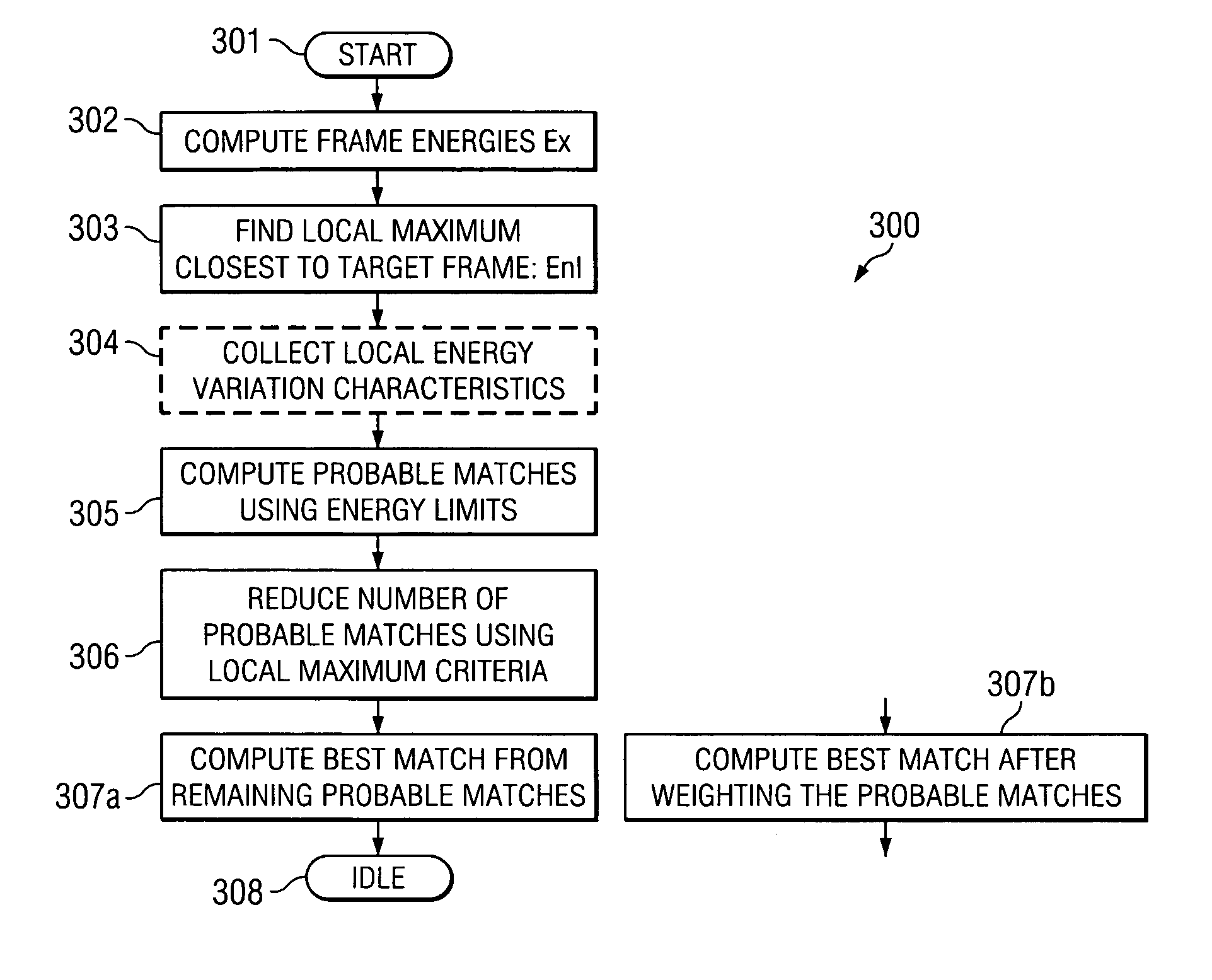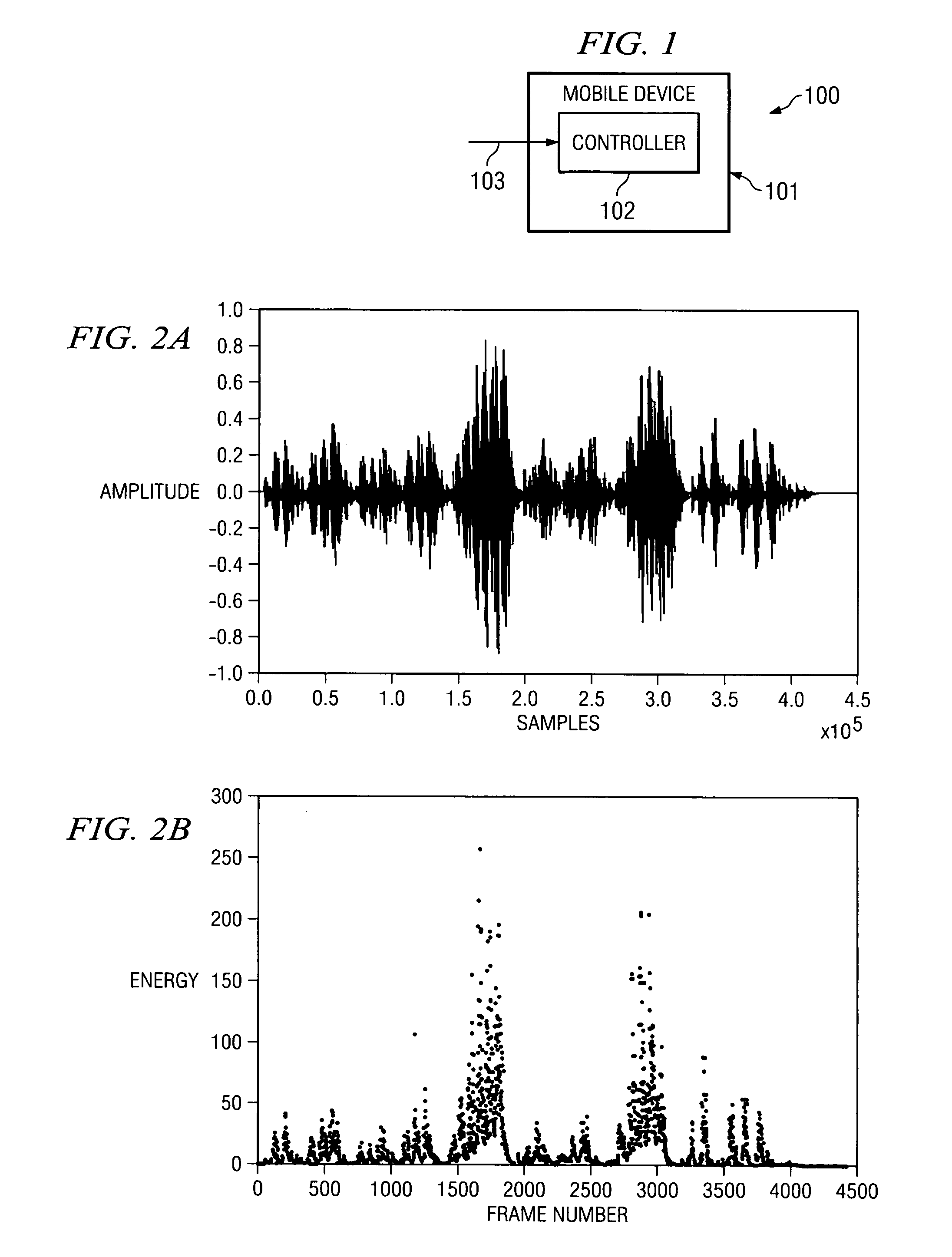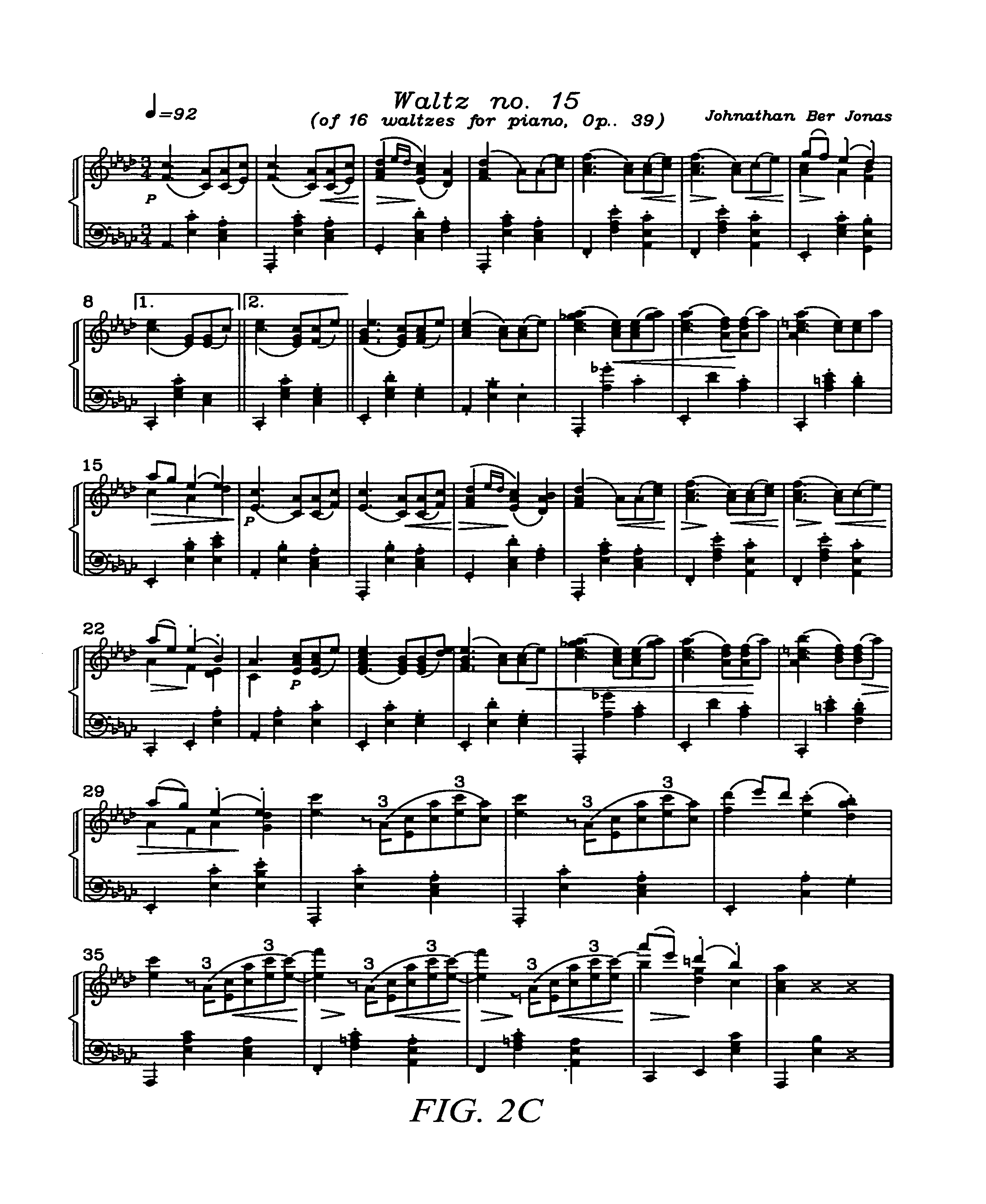Energy-based audio pattern recognition
a pattern recognition and energy-based technology, applied in speech analysis, special data processing applications, instruments, etc., can solve the problems of high computational intensity of standard generic pattern recognition algorithms, algorithms that do not take into account the specific characteristics of audio signals, and difficult automatic classification or description of patterns
- Summary
- Abstract
- Description
- Claims
- Application Information
AI Technical Summary
Problems solved by technology
Method used
Image
Examples
Embodiment Construction
[0015]FIGS. 1 through 4B, discussed below, and the various embodiments used to describe the principles of the present invention in this patent document are by way of illustration only and should not be construed in any way to limit the scope of the invention. Those skilled in the art will understand that the principles of the present invention may be implemented in any suitably arranged device.
[0016]FIG. 1 is a high level diagram of a system implementing pattern recognition through frame energy-based criteria according to one embodiment of the present invention. System 100 in the exemplary embodiment includes a mobile device 101, which may be a mobile telephone, a mobile music (e.g., MP3) player, or the like. With mobile device 100, a controller 101 receives audio signals from an input 102. Those skilled in the art will recognize that the complete structure and operation of a pattern recognition system is not depicted or described herein. Instead, for simplicity and clarity, only s...
PUM
 Login to View More
Login to View More Abstract
Description
Claims
Application Information
 Login to View More
Login to View More - R&D
- Intellectual Property
- Life Sciences
- Materials
- Tech Scout
- Unparalleled Data Quality
- Higher Quality Content
- 60% Fewer Hallucinations
Browse by: Latest US Patents, China's latest patents, Technical Efficacy Thesaurus, Application Domain, Technology Topic, Popular Technical Reports.
© 2025 PatSnap. All rights reserved.Legal|Privacy policy|Modern Slavery Act Transparency Statement|Sitemap|About US| Contact US: help@patsnap.com



